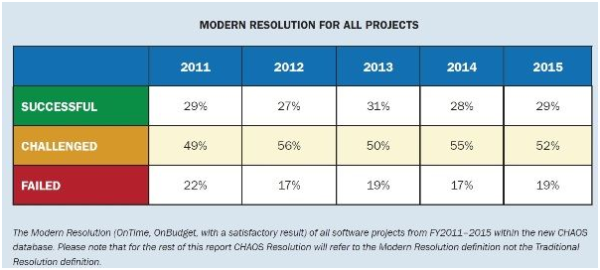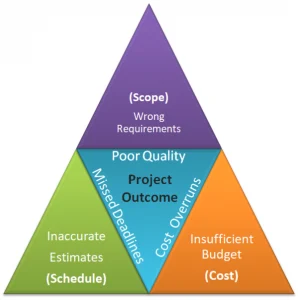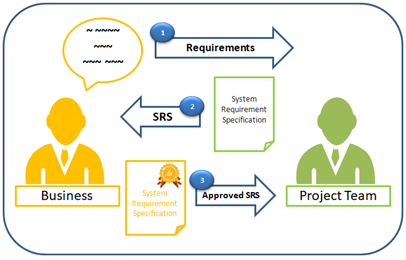The business often finds itself in difficulty while declaring a project a success or a failure unless they have a well-defined project success criterion. According to The Standish Group Chaos Report, just nearly 30% of IT project implementations are done right and with success, whereas 20% of projects are total failures and the rest 50% of projects fall under the challenged category.

This is possible for a project to be successful from a scope, schedule, budget viewpoint, and to be unsuccessful from a business viewpoint. This happens when the Business Objectives Shift during the project execution itself.
Let us take the example of a Tax Solution System for the new Goods and Service Tax enacted by the Government of India. In case, before the launch of the said Tax Solution, the GOI changes its policy restricting any private player (Non-GSP) from providing tax intermediary service. This will make the entire project redundant.
Primarily most of the projects fail for imprudence in managing the scope, schedule, and cost. The fault can be with the business or the project team but the result is never helpful.

Scope mismanagement has the following depressing outcomes:
Wrong Requirement: The business requirements must be clear and unambiguous. The wrong requirements captured never deliver the right results to the business. Unpleasant questions such as “This is not what we have asked for!”, “This is not what we need!” can very well b avoided with a systematic approach. This is done by involving the business stakeholders; end-users very early in the analysis stage and taking their approval of the proposed application.

Scope Creep: The uncontrolled expansion to project scope without adjustments to time, cost, and resources is referred to as scope creep. Both frequent and uncontrolled changes negatively impact the project team which already struggles to realign with the evolving project scope. This results in missed deadlines, low staff morale, and cost overrun for the IT Company. Explicitly stating what is out of scope for the project helps manage stakeholders’ expectations and reduces the chances of scope creep.
Late Discovery: The design of a cycle can’t be modified to build a car. A project with ill-conceived requirements ends up with the discovery of new requirements at the advanced stage of application development. Then the project team does quite the obvious, instead of revisiting the design completely they try to fix the design with patchwork. This is a case of wrong requirements captured at the beginning.

Gold Plating: This is a spillover problem of thinking late on a requirement. The project team ends up incorporating costly and unnecessary features requested by the business. The design renders the product less useful or needlessly costlier for the business.

Upfront Scope Definition: However experienced the project team may be, enough time and men must be invested to collect the right requirement of the business. Upfront scope definition closes all doors for new discoveries. Then it opens up the door for both late discovery and gold plating.
Lack of Discipline: The disciplines built into change control practice speak a ton about the culture of the organisation. Change control misconduct has the potential to forestall a well progressing project and fail an established product. Low priority changes with heavy impact and high cost may prove disastrous for the product, if not managed properly.

Schedule mismanagement has the following depressing outcomes:
Inaccurate Estimates: Factors such as lack of experience, poor understanding of inherent requirement complexity, baseless assumptions, and new technology leads to the very inaccurate time estimate. The project manager may also give a bad estimate, because of faulty estimation practice, or estimating too early in the project. Sometimes the PM does this out of over-ambitiousness to impress upon the business.
Unrealistic Deadline: An otherwise hard-pressed business sometimes suggests some unrealistic deadline without being thoughtful of the internal project dynamics resulting in a missed deadline. This seriously impacts staff morale and demotivates the project team.
Cost mismanagement has the following depressing outcomes:
Insufficient Budget: The project sponsors usually set aside a fund called project budget at the very beginning. The budget also takes into account the management reserve kept for the unforeseen work in the project. When the project budget is curtailed then correspondingly the scope and schedule must be reduced.
Cost Overruns: Factors such as rework, uncontrolled scope expansion, substandard resources result in spending more man-hour on the project for extended schedule, overrunning the cost.
A successful project may be defined as a project meeting or exceeding the primary project parameters Scope – as per the requirement, Cost – effective and Schedule – delivered on time, achieving project objectives, and satisfying both stakeholders – who conceived the idea, and the end-users – who will finally use it.


Leave A Comment